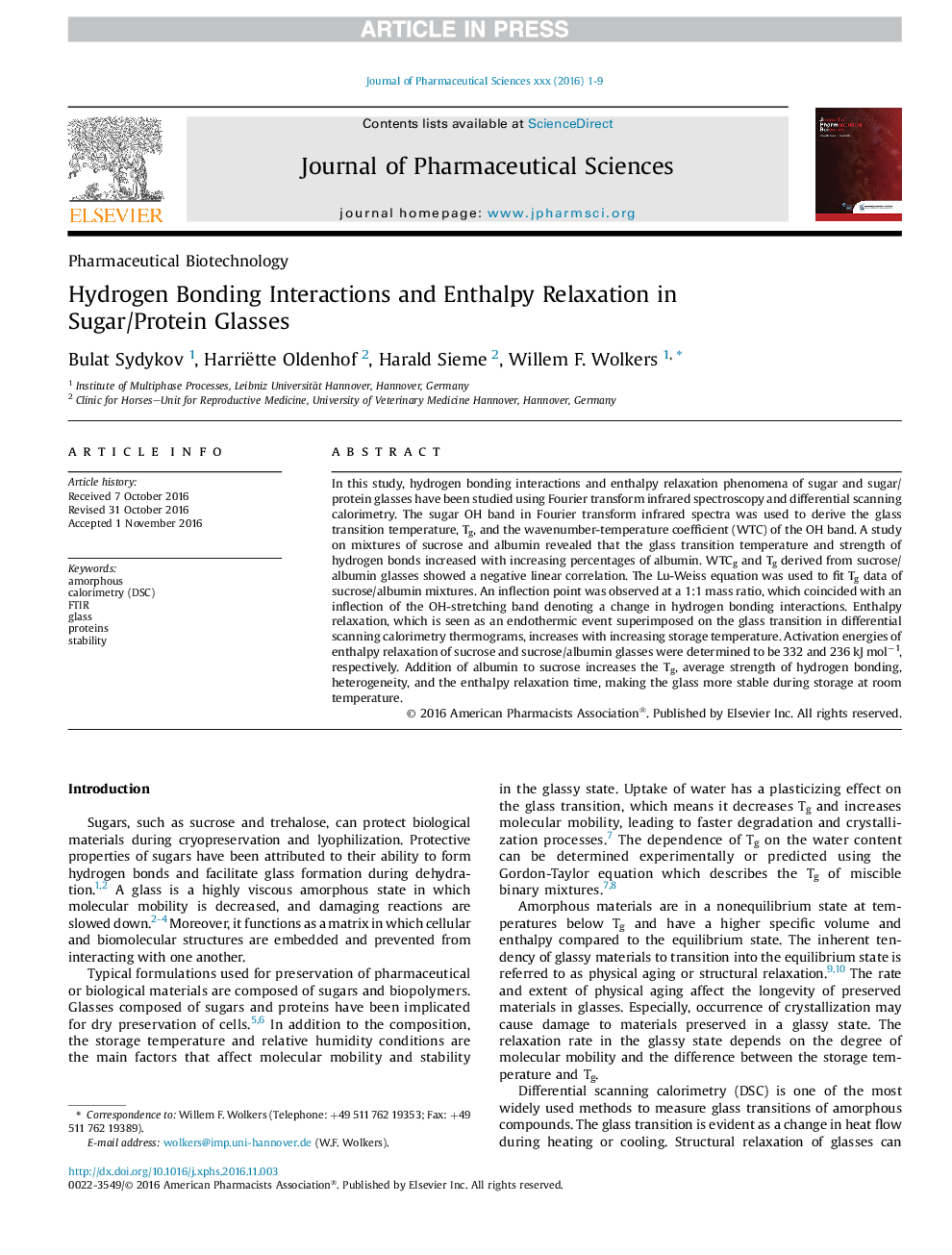| Article ID | Journal | Published Year | Pages | File Type |
|---|---|---|---|---|
| 8514411 | Journal of Pharmaceutical Sciences | 2017 | 9 Pages |
Abstract
In this study, hydrogen bonding interactions and enthalpy relaxation phenomena of sugar and sugar/protein glasses have been studied using Fourier transform infrared spectroscopy and differential scanning calorimetry. The sugar OH band in Fourier transform infrared spectra was used to derive the glass transition temperature, Tg, and the wavenumber-temperature coefficient (WTC) of the OH band. A study on mixtures of sucrose and albumin revealed that the glass transition temperature and strength of hydrogen bonds increased with increasing percentages of albumin. WTCg and Tg derived from sucrose/albumin glasses showed a negative linear correlation. The Lu-Weiss equation was used to fit Tg data of sucrose/albumin mixtures. An inflection point was observed at a 1:1 mass ratio, which coincided with an inflection of the OH-stretching band denoting a change in hydrogen bonding interactions. Enthalpy relaxation, which is seen as an endothermic event superimposed on the glass transition in differential scanning calorimetry thermograms, increases with increasing storage temperature. Activation energies of enthalpy relaxation of sucrose and sucrose/albumin glasses were determined to be 332 and 236 kJ molâ1, respectively. Addition of albumin to sucrose increases the Tg, average strength of hydrogen bonding, heterogeneity, and the enthalpy relaxation time, making the glass more stable during storage at room temperature.
Related Topics
Health Sciences
Pharmacology, Toxicology and Pharmaceutical Science
Drug Discovery
Authors
Bulat Sydykov, Harriëtte Oldenhof, Harald Sieme, Willem F. Wolkers,
